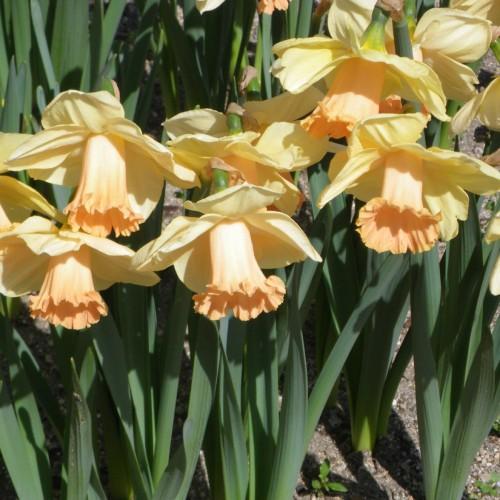
split-cupped daffodil
Narcissus 'Mary Gay Lirette'
Cycle:
Perennial
Watering:
Average
Hardiness Zone:
3 - 8
Flowers:
Flowers In Spring
Sun:
Full sun,part shade
Leaf:
Yes
Growth Rate:
High
Maintenance:
Low
watering
Split-cupped daffodil (Narcissus 'Mary Gay Lirette') prefers moist soil, so you should try to water it when the top inch or 2 of soil feels dry. During the blooming season, water the plant every 1 to 2 weeks, thoroughly soaking the soil until it is moist. In the late summer and fall, when the plant starts to enter into dormancy, only water it every 2 to 4 weeks. Be sure to decrease watering when temperatures start to decline in the fall, as too much water at this time can shock the plant and cause fungal diseases.
sunlight
The split-cupped daffodil (Narcissus 'Mary Gay Lirette') is a medium-sized drought-tolerant plant that thrives in sunny conditions. It should be placed in an area that receives full sun for at least 6 to 8 hours per day, with the best exposure being in the morning. If possible, position it in a location where it will be shaded from direct sunlight during the heat of the day to protect it from sunburn and wilting. If the location is too shady, the plant will not bloom as prolifically. It's important to ensure that the location is not in an area where there will be strong winds, as this could damage the delicate flowers.
pruning
Split-cupped daffodils, like most other daffodils, are best pruned in late spring, once the flowers start to fade. Pruning should be done carefully, as it can damage the plant if done incorrectly. To prune split-cupped daffodils, begin by snipping off the spent bloom from the top of the flower stem. Next, carefully remove any foliage that has become brown and dry. Finally, take out any large stems that may have grown, as these can cause overcrowding in the plant. When finished, trim down the stems to a height of 6-8 inches, and make sure to spread out the foliage for proper air circulation. It’s also important to remove dead heads and stems close to the ground. Doing this helps to prevent disease and encourages new growth. Split-cupped daffodils should be pruned every year, so that the plant remains healthy and lives for many years to come.
